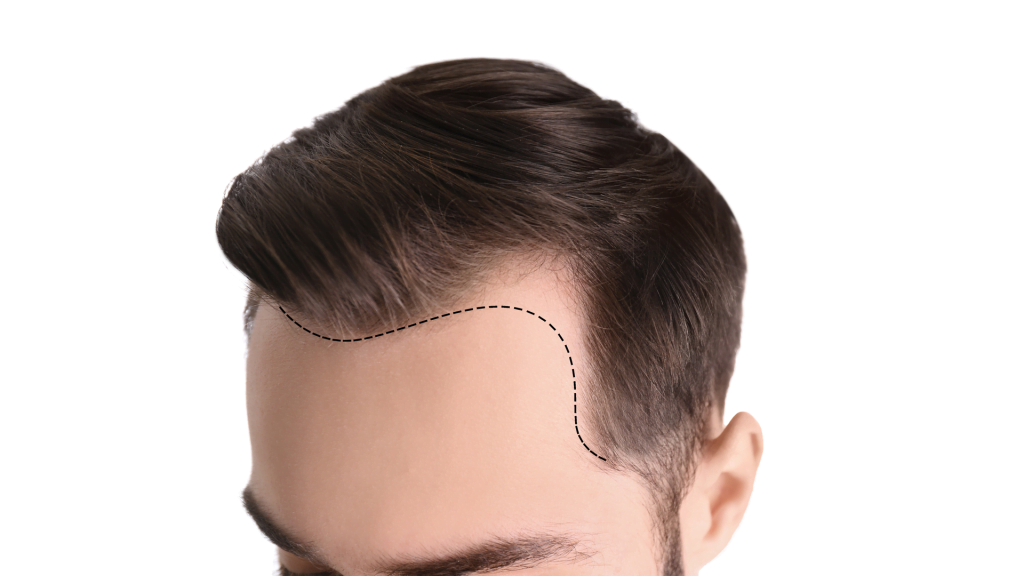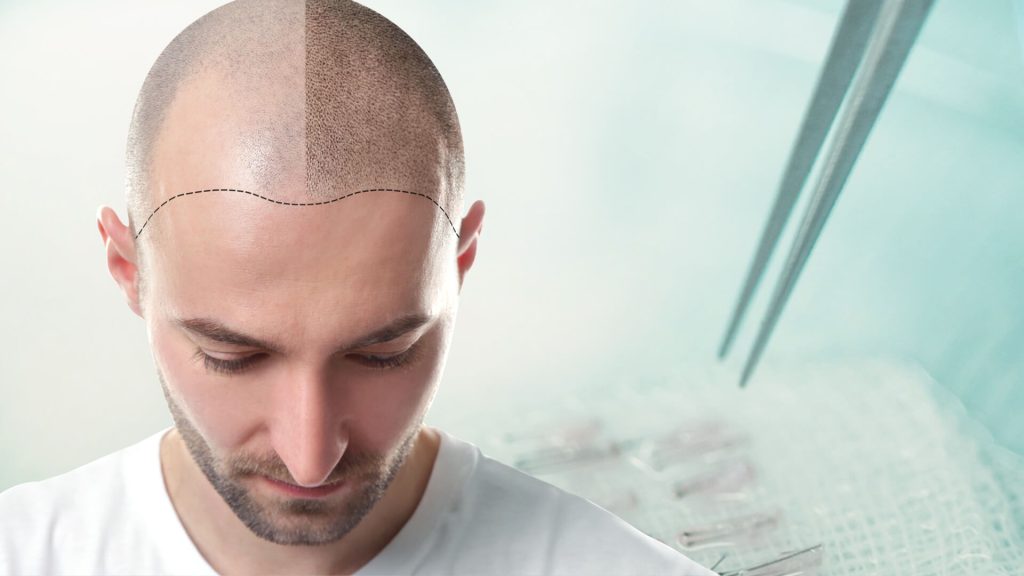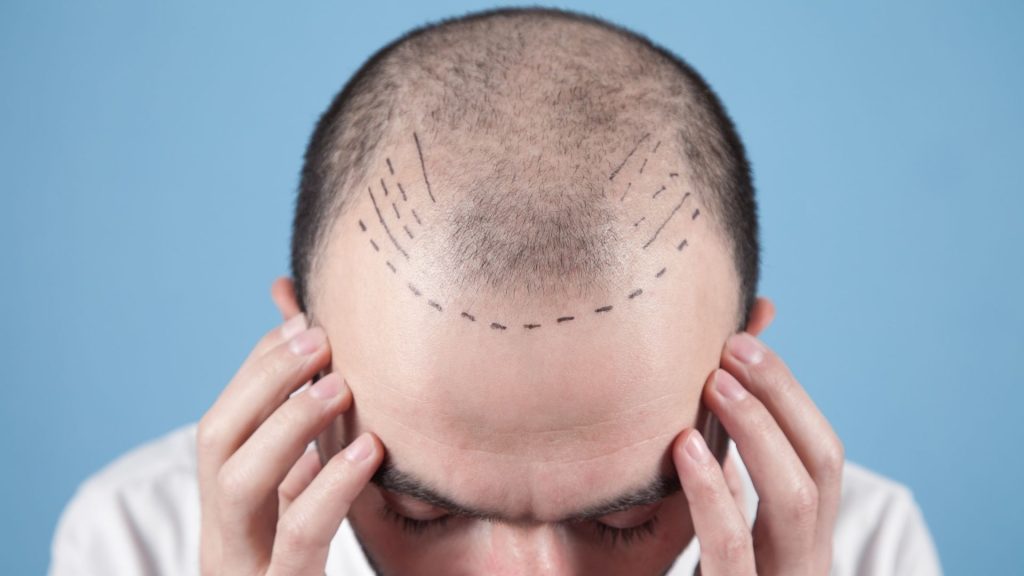Hair loss or hair thinning is a common problem that affects a significant proportion of the population. For those who suffer from this condition, hair transplantation is a natural and permanent solution. This microsurgical procedure involves transferring healthy hair follicles from areas with active hair growth to areas where baldness or thinning has occurred.
Table of Contents
What is Hair Transplantation?
Hair transplantation is a microsurgical method of adding the patient’s own healthy hair to areas where the hair follicle is no longer active. The process involves collecting hair follicles that are resistant to shedding from the nape area of the patient and transplanting them into the thinning or completely shedding parts of the scalp.
The aim of the procedure is to restore a permanent and natural-looking head of hair, without obvious signs of transplantation. The operation is planned and applied individually for each patient, and is considered a minor surgical procedure. For optimal safety and results, it is recommended to have the procedure done in a hospital environment by experienced and specialized doctors and their teams.

Who is a Good Candidate for Hair Transplantation?
Hair transplantation is the most commonly applied cosmetic surgery for men, as almost 50 percent of men over the age of 50 are faced with the problem of hair loss. However, women may also experience hair loss or thinning. Hair loss can be caused by a variety of factors, including genetic coding, advancing age, traumatic injuries, or medical disorders.
After being diagnosed by a medical professional, hair transplantation can be successfully applied to individuals who have sufficient healthy hair follicles in the donor area. The transplantation method can be applied not only to the scalp, but also to other areas of the body such as eyebrows, mustache or beard.
Why does hair loss occur?
Hair loss can have various causes, including genetic factors, aging, traumatic injuries, and medical conditions. Once diagnosed by a medical professional, hair transplantation can be a successful treatment option for individuals with sufficient hair follicles in the donor area.
The transplantation method can effectively restore hair not only on the scalp but also in other areas of the body such as eyebrows, mustache, or beard.
How is Hair Transplantation Performed?
Hair transplantation is a surgical procedure that involves transplanting hair follicles from the nape or other parts of the body to the targeted bald area. These hair follicles, known as grafts, are taken from areas of the body that contain hair and are genetically resistant to balding.
If there is not enough healthy hair in the neck or temple area, hair follicles can be taken from other parts of the body, such as the arms or chest wall.
The procedure typically takes a few hours to complete, depending on the amount of hair loss. If the balding area is large, multiple sessions may be necessary to achieve desired results.
The procedure is generally performed under local anesthesia with sedation, and after the surgery, a special bandage is applied to the head. Pain relief is managed with painkillers, although it is rare for patients to experience significant pain after the procedure.
After three days of rest at home, most patients are able to return to work with their head covered. The first dressing is typically done on the fifth day after surgery.
If you are considering hair transplantation, it is important to consult with a qualified and experienced surgeon who can evaluate your individual needs and goals.
What methods are used for hair transplantation?
In hair transplant procedures, methods that leave no scars such as FUE, or methods that may leave a slight scar on the nape of the neck are successfully applied. In the FUE method, hair follicles are individually taken and transplanted to the areas that are missing hair, while in the FUT method, a strip of skin containing hair from the back of the head is removed. The person who will undergo a hair transplant must have healthy hair on the back and sides of their head to be used as donor areas. Other factors such as hair color, texture, waviness, and density also affect the outcome of the procedure.
Which method to choose is decided after a hair and scalp analysis, taking into account the individual’s priorities. Although the FUE method, which does not leave a scar, is mostly preferred, in some cases, the FUT method may also need to be applied. Hair transplantation can be applied not only for baldness but also to increase hair density in thinning areas.
What is the most important factor in hair transplantation?
Hair transplantation is a serious surgical procedure. To minimize the risks of hair transplantation, it should be performed in a hospital environment. It is crucial that it is performed by plastic surgeons who are well-educated and experienced in this field, to obtain the best results. For successful hair transplantation, the transplanted hair follicles need to be quickly vascularized or “held” in the area where they are placed during the operation. With the correct technique, the success rate of hair transplantation is quite high. For a natural appearance, it is essential to transplant the hair at the correct distance, angle, and density towards the bald areas.
Does the transplanted hair fall out after hair transplantation?
The transplanted hair typically falls out within a few weeks after the hair transplant process, which is a normal occurrence. However, the shed hair will grow back after 3-4 months, and the transplanted hair follicles will preserve their character and not fall out. It’s worth noting that the original hair in the same area may continue to shed over time, and a new hair transplant may be necessary depending on the decrease in hair density. Post-surgery hair loss may continue progressively, especially if an unnatural appearance occurs in the new hairline area, which may require additional surgical intervention in the future.
To whom can hair transplantation be applied?
Hair transplantation operations can be performed on individuals of all ages who have experienced hair loss for various reasons, including men and women aged 19-20, as long as they don’t have a physiological disease that prevents hair transplantation and have enough follicles in the donor area.
Am I a suitable candidate for hair transplantation?
- If you have completed your physical development,
- If you do not have a physiological disease that prevents hair transplantation,
- If there are enough and suitable hair follicles in the donor area on your head,
- If there is a suitable space in the area where the hair follicle will be transplanted, you are a suitable candidate for hair transplantation.
- Hair transplant operation is not only for male pattern hair loss; it is also successfully applied to local cavities, scars, burn scars, surgical sutures that may occur as a result of various diseases.
- Hair transplantation is also successfully applied in women. Considering the size of the bald area, especially in women, unshaven transplantation is also performed.
- You can have a preliminary interview with our doctor as soon as possible and have a hair analysis done.
- Your doctor will tell you what you should pay attention to after hair transplantation.

Does the transplanted hair look natural?
In order for the transplanted hair to look natural, the operation must be performed by specialist doctors and professionals. In hair transplantation operations performed by experienced specialists in the right health institution, naturalness can be achieved at a level that will not be obvious. Our goal is to achieve maximum density in hair with Sapphire and DHI techniques that we apply in hair transplantation. An average person has 100 hairs per square centimeter, and with new techniques, we can fit 80 follicles, or hair strands, in 1 cm square. We strive to obtain the closest result to the patient’s desired appearance while taking the forehead line into consideration first.

Is Turkey the leader in the hair transplant?
Want to get rid of thinning hair? Or are you looking for an effective way to deal with baldness? In any case, you may have considered hair transplantation as an effective option for you. Hair transplantation, sometimes also called hair restoration, is the procedure of using healthy hair follicles taken from another part of your head to transplant hair to areas with hair loss problem.
When it comes to hair transplantation, Turkey has become one of the leading players in the industry, with thousands of people opting for hair transplants here for good reasons. This article provides all the necessary information about hair loss treatments, hair transplantation, and restoration in Turkey.
Benefits of Hair Transplantation in Turkey
If you are considering hair transplant in Turkey, here are some benefits you should know about:
Advanced Hair Transplant Techniques
Hair transplant surgeons in Turkey prefer to use techniques that minimize pain and discomfort during recovery. These techniques also do not cause visible scars and offer faster recovery time. With the use of advanced techniques, hair transplant surgery is now more precise and efficient, yielding more natural-looking results.
Cost-effective Procedures
Compared to the United States and Europe, hair transplant procedures in Turkey are quite cost-effective. In the US and Europe, hair transplant procedures can cost between $7,000 and $25,000. However, the cost of a hair transplant in Turkey ranges from $1,500 to $7,000, including accommodation and transportation costs. In general, hair transplantation in Turkey is much cheaper than in other European countries.
If you are looking for an affordable and high-quality hair transplant, Turkey is an excellent option to consider.
Best Hair Transplant Destination: Why Turkey Attracts Global Tourists
Turkey is a country of stunning beauty and rich culture that has been luring visitors for centuries. In recent years, it has become a top tourist destination not just for its amazing city attractions and holiday destinations, but also for its world-class hair transplant procedures. In this article, we will explore why Turkey has become such a popular location for hair transplantation and what makes it a premier destination for anyone considering this treatment.
World-class hair surgeons at your fingertips
Turkey has been a hotbed for hair transplantation for years, with some of the best hair surgeons in the world operating here. These skilled and experienced professionals have access to advanced treatment technologies and techniques, providing patients with outstanding results. Many of the hair transplant clinics in Turkey boast JCI-accredited facilities, meaning that they are recognized for their high level of quality care and service.
Short wait times for quality hair transplant treatment
Unlike many other countries that offer hair transplant procedures, you don’t have to wait months to receive treatment in Turkey. The country is home to a vast number of clinics, each with their own team of specialists ready to offer their services. As a result, patients can book an appointment and receive treatment much faster, without having to wait for months for an available slot.
Strategic location attracting global tourists
Turkey’s strategic location makes it a popular destination for hair transplant procedures, attracting patients from all over the world. Situated at the crossroads between Europe and Asia, Turkey is easily accessible from a range of countries, including the Middle East and North Africa. Patients from both continents visit Turkey for its hair transplant services, adding to its already thriving tourism industry.
Conclusion
Turkey’s combination of skilled hair surgeons, short wait times for treatment, and strategic location make it a premier destination for hair transplantation. With its reputation for providing high-quality care and service, it’s no wonder why so many patients choose to visit Turkey for their hair transplant procedures. If you’re considering a hair transplant, Turkey may be the perfect destination for you.









